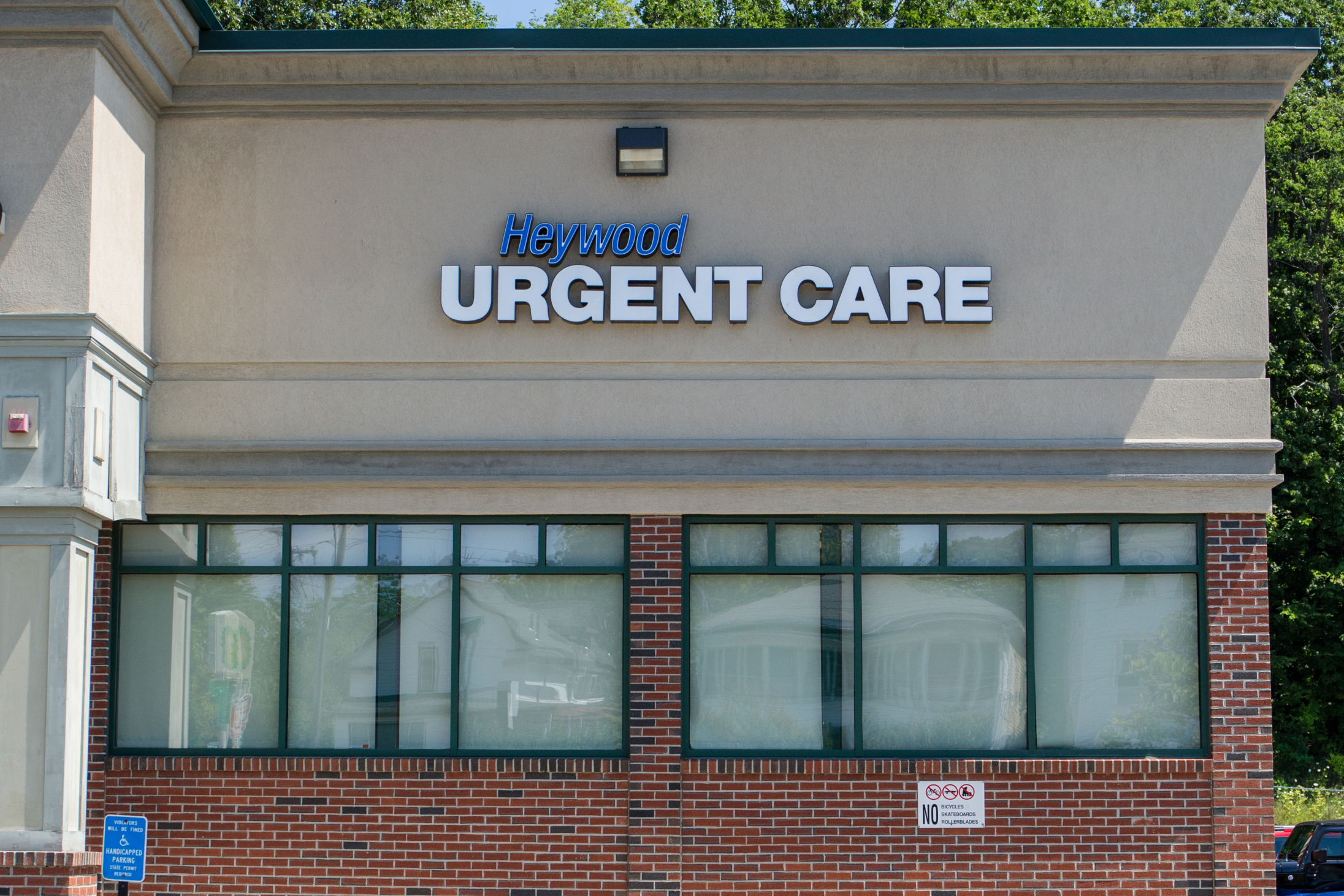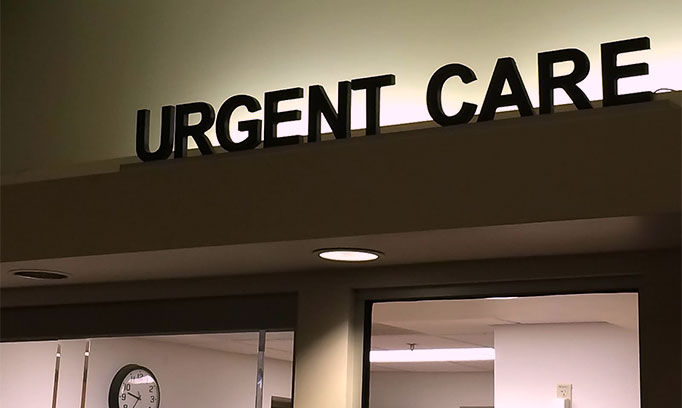What to Anticipate at a Leading Clinic Offering Urgent Care Services
Recognizing the Duty of Urgent Treatment in Providing Timely Treatment for Non-Life-Threatening Problems
Urgent care centers have actually arised as a crucial component of the health care landscape, resolving the prompt needs of patients with non-life-threatening conditions. Comprehending the subtleties of immediate treatment can dramatically impact person end results and the overall efficiency of medical care delivery.
What Is Urgent Treatment?
Immediate treatment describes a category of clinical solutions made to resolve non-life-threatening conditions that call for instant interest. These centers act as an intermediary in between key care physicians and emergency clinic, using a hassle-free option for clients that require punctual care without the substantial waiting times usually related to emergency divisions.
Urgent treatment facilities are normally staffed by physician, including medical professionals, nurse professionals, and physician assistants, who are educated to diagnose and treat a large selection of problems. Usual services given by these centers include therapy for minor injuries, diseases, and infections, along with diagnostic tests such as X-rays and laboratory work.
In addition, immediate treatment centers frequently accept walk-in clients, getting rid of the demand for consultations. Overall, immediate care plays an important function in the medical care system, guaranteeing individuals can access crucial medical services without delay and successfully.

When to seek care at an urgent treatment facility instead of a primary care physician or an emergency situation room,Several individuals might discover themselves unpredictable concerning. Urgent treatment is created to attend to non-life-threatening conditions that require punctual attention but are not serious sufficient to warrant an emergency situation space go to.
Typically, one need to take into consideration immediate treatment for problems such as minor fractures, strains, cuts calling for stitches, or infections like urinary system system infections. Furthermore, cold or influenza signs and symptoms, breakouts, and allergies can also be suitably managed in this setup.
It is necessary to note that urgent treatment is not ideal for dangerous emergency situations, such as breast discomfort, problem breathing, or extreme blood loss, which demand instant emergency situation area treatment.
People that do not have accessibility to a medical care medical professional or can not protect a prompt consultation may additionally gain from urgent care services. Ultimately, understanding when to use urgent treatment can bring about extra efficient medical care delivery, enabling patients to obtain the ideal degree of care based on their particular wellness requirements.
Benefits of Urgent Treatment Centers
Picking urgent care centers for non-life-threatening problems provides a number of benefits that boost patient experience and ease of access. One main advantage is the reduced delay times compared to traditional emergency rooms. Urgent treatment centers commonly operate a first-come, first-served basis, enabling clients to obtain prompt clinical attention without the lengthy delays commonly connected with medical facility settings.
Furthermore, urgent care facilities provide prolonged hours, including evenings and weekends, suiting individuals with differing routines. This adaptability makes certain that people can look for treatment when it is most hassle-free for them, further promoting prompt intervention.

Moreover, these facilities often supply an extensive range of solutions, consisting of analysis examinations and small procedures, all under one roofing system. This consolidation of solutions not just improves the client experience however likewise fosters a much more cohesive strategy to managing non-life-threatening health and wellness problems, inevitably profiting total patient results.
Usual Problems Dealt With
At immediate treatment centers, a selection of non-life-threatening problems can be properly dealt with, giving clients with obtainable and timely clinical assistance. These facilities are particularly experienced at attending to problems that need prompt interest but do not posture an instant threat to life or arm or leg.
Typical conditions dealt with at urgent treatment facilities consist of minor injuries such as fractures, strains, and strains. Additionally, they manage health problems like colds, flu, and infections, including urinary tract infections and sinus problems. Skin disease, varying from breakouts to insect attacks, are likewise frequently addressed. Immediate care facilities are geared up to perform essential analysis examinations, such as X-rays and lab examinations, allowing them to supply detailed treatment.
In addition, immediate treatment service providers can carry out inoculations, assisting to avoid the spread of transmittable conditions - Urgent Care. They additionally use solutions for small treatments, such as suturing injuries or draining pipes abscesses. By using these varied solutions, urgent care centers play an important duty in bridging the gap in between medical care and emergency situation services, making sure people get timely therapy for a wide variety of conditions without the demand for long wait times usually related to emergency clinic
Just How Urgent Treatment Supports Medical Care System
Immediate treatment facilities play a crucial duty in supporting the overall medical care system by alleviating the burden on emergency departments and offering timely access to medical care for non-life-threatening problems. By Click Here managing cases such as small injuries, infections, and health problems, immediate treatment centers allow emergency situation divisions to focus on more critical individuals needing immediate interest.
Additionally, urgent care centers enhance medical care availability, supplying extensive hours and a much more hassle-free option to conventional medical care settings. This ease of access is particularly useful for individuals that might not have a regular medical professional or who require prompt therapy beyond normal office hours. Consequently, urgent care facilities properly minimize boost and wait times client fulfillment.
Additionally, immediate care facilities contribute to set you back financial savings for both patients and the medical care check over here system by giving lower-cost services contrasted to emergency situation departments. This economic effectiveness is crucial in an era of climbing health care costs, permitting patients to receive essential care without sustaining inflated expenditures.
Conclusion
To conclude, urgent care facilities play a crucial function in the health care system by supplying timely therapy for non-life-threatening conditions. By connecting the space in between medical care and emergency spaces, these facilities guarantee that clients get prompt clinical focus without the lengthy delay times typically connected with emergency departments. The availability and performance of immediate care centers add significantly to minimizing the general problem on healthcare resources, boosting person results, and promoting a more efficient healthcare distribution system.
Immediate care facilities have emerged as a vital part of the health care landscape, dealing with the immediate needs of patients with non-life-threatening problems. Urgent care sees generally incur reduced out-of-pocket costs contrasted to emergency situation department visits, making treatment much more affordable for patients without compromising top quality. Immediate treatment centers are equipped to do required diagnostic tests, such as X-rays and research laboratory examinations, allowing them to offer comprehensive care.
By using these varied solutions, urgent care facilities play an important function in linking the gap in between primary care and emergency services, ensuring people get prompt treatment for a wide array of conditions without the requirement for lengthy delay times normally linked with emergency rooms.
Moreover, urgent care centers boost health care access, supplying prolonged hours and an extra practical option to typical main care settings.